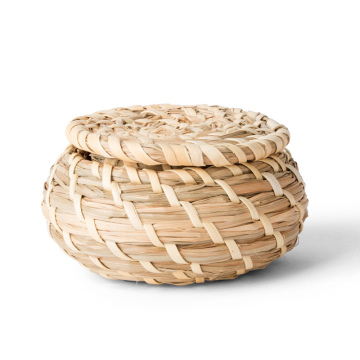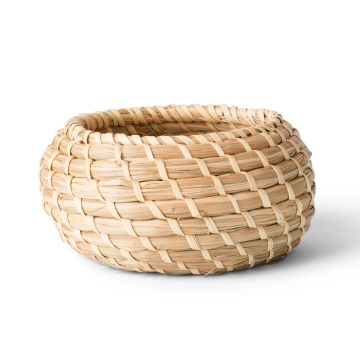Rolling into Flavor: A Sushi Adventure in Japan
The Rich History of Sushi in Japan
Sushi, a culinary treasure of Japan, has its origins steeped in ancient practices of preserved food. Its inception can be traced back to a method known as narezushi, where fish was wrapped in fermented rice, allowing it to be preserved for extended periods. This method, which dates back to the 2nd century, provided not only sustenance but also a transformative approach to utilizing ingredients. Over centuries, sushi evolved notably, with the rice ultimately becoming an essential element rather than merely a preservation technique.
As we journey further into sushi's history, the Edo period (1603-1868) emerges as a crucial phase in its development. During this era, sushi transitioned from being a fermented delicacy to the fresh and ready-to-eat style known as nigiri-zushi. This simpler form became immensely popular in Tokyo, then known as Edo, and laid the foundation for modern sushi. The artisans of Edo pioneered the craft, instilling regional practices and innovative preparations that would influence sushi-making across Japan.
Moreover, sushi is deeply rooted in Japanese culture, representing not just a meal but an culinary experience shared during family gatherings and festivals. The act of preparing and enjoying sushi has become a traditional ritual, embodying values of craftsmanship and seasonal appreciation. In Osaka, for instance, a distinct variant known as Oshizushi is celebrated, where fish and rice are pressed into a mold. This regional diversity illustrates how sushi adapts, reflecting local ingredients and culinary traditions.
The significance of sushi extends beyond gastronomy; it symbolizes the connection of Japanese people to their environment, emphasizing sustainability and local sourcing. From celebrations to casual dining, sushi has woven itself into the cultural fabric of Japan, becoming an iconic representation of its rich culinary heritage.
Types of Sushi: A Culinary Breakdown
Sushi is an intricate culinary art that encompasses various types, each showcasing unique ingredients, preparation techniques, and serving styles. The most commonly recognized types of sushi include nigiri, maki, and sashimi, each offering distinct culinary experiences for sushi enthusiasts.
Nigiri is a hand-formed mound of sushi rice topped with a slice of fresh fish or seafood. The adhesion comes from the careful balance of vinegared rice, which enhances the natural flavors of the toppings. The importance of selecting fresh, high-quality seafood cannot be overstated, as it is the centerpiece of this sushi type. Common choices for nigiri include salmon, tuna, and eel, allowing the diner's palate to savor the umami essence inherent in the fish.
Maki, or sushi rolls, differs from nigiri by enveloping the rice and fillings in a sheet of nori (seaweed). Maki rolls can be further categorized into hosomaki (small rolls with one filling), uramaki (inside-out rolls with rice on the outside), and temaki (hand rolls). Each variation boasts a unique taste and presentation, making them appealing to a broad audience. Seasonal ingredients often play a pivotal role in defining the fillings; for example, during the spring season, one might find fresh vegetables and fish that reflect the vibrancy of the time.
Sashimi, while often associated with sushi, refers specifically to thinly sliced raw fish or seafood served without rice. The focus here remains on the quality and freshness of the ingredients, typically highlighting seasonal catches and their delicate flavors. The art of sashimi lies in its presentation, which enhances the dining culinary experience, allowing the diner to appreciate each slice's beauty and taste.
Ultimately, the diverse types of sushi reveal not only the culinary skills involved in their preparation but also the culture and tradition behind their consumption. Understanding these various forms is essential in grasping the broader implications of sushi as a fundamental component of Japanese cuisine.
Experiencing Sushi in Japan: Must-Visit Places
Japan boasts a rich tapestry of culinary experiences, with sushi being one of its most revered gastronomic treasures. For those seeking to indulge in authentic sushi, visiting notable sushi establishments is essential. In Tokyo, one cannot overlook the iconic Sukiyabashi Jiro, famously featured in documentaries. This Michelin-starred restaurant is renowned for its intimate atmosphere and extraordinary omakase culinary experience, where Chef Jiro Ono delivers a masterclass in sushi artistry. Reservations are essential, as only a limited number of diners can be accommodated each day.
For a more casual setting, consider Sushi Saito, another high-end venue where discerning sushi enthusiasts gather. Known for its painstaking attention to detail and exquisite ingredients, this restaurant offers an immersive sushi culinary experience, with exceptional seafood sourced from Japan's best markets. The chef’s selections are a highlight, boasting a range of seasonal offerings that elevate the sushi culinary experience.
Venture beyond the urban hustle and bustle to discover hidden gems in coastal towns, such as Kanazawa. Here, you will find Itaru, an unassuming sushi shop celebrated for its freshness and local charm. The restaurant serves sushi made from fish caught in the nearby Sea of Japan, ensuring each bite is layered with oceanic flavor. Diners are invited to culinary experience sushi-making classes, providing insights into the craftsmanship and technique involved in sushi preparation.
In addition to these renowned establishments, it is important to familiarize oneself with Japanese dining etiquette. Engaging with the chef, understanding menu options, and practicing proper chopstick usage can significantly enhance your sushi culinary experience. Explore these venues and adopt their traditions, as they encapsulate the essence of sushi culture in Japan, leading to an unforgettable culinary adventure.
Sushi Tasting Adventure: Personal Anecdotes and Tips
Embarking on a sushi tasting adventure in Japan is truly an culinary experience that tantalizes the senses and celebrates the country's rich culinary heritage. During my travels across the various regions, I encountered numerous dining culinary experiences that left a lasting impression. One memorable evening was spent in a small sushi bar in Tokyo's Tsukiji district. The atmosphere was intimate, with the chef preparing each piece of sushi right before my eyes. The freshness of the fish, paired with perfectly seasoned rice, created a culinary symphony that exemplified why sushi holds such an esteemed place in Japanese culture.
Engaging with locals enhances the sushi culinary experience. While at a conveyor belt sushi restaurant, I struck up a conversation with a fellow diner who shared insights on the different types of sushi and regional specialties. This connection not only enriched my understanding but also made my journey more memorable. Additionally, I learned the importance of asking about the ingredients and preparation methods, which can lead to delightful discoveries. The language of sushi menus may appear daunting; however, I found that basic phrases like "oishii" (delicious) and "sore wa nan desu ka?" (what is that?) can go a long way in enhancing the experience for any traveler.
When choosing a sushi destination, consider exploring local favorites rather than tourist hotspots. Researching establishments with an emphasis on fresh, sustainable seafood results in a more authentic experience. Furthermore, understanding sushi etiquette is crucial; for instance, it's customary to eat sushi with hands and to appreciate the craftsmanship by not over-soy-saucing each piece. Exploring these nuances not only elevates the dining experience but also honors the tradition of sushi. As you prepare for your own sushi journey through Japan, embrace this culinary art form with enthusiasm and a willingness to learn from every bite.











